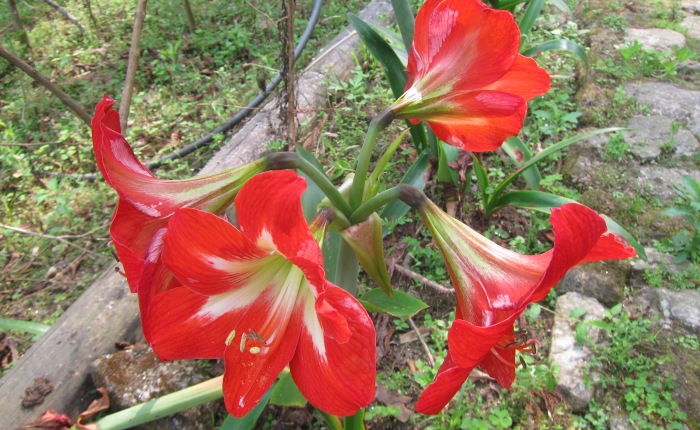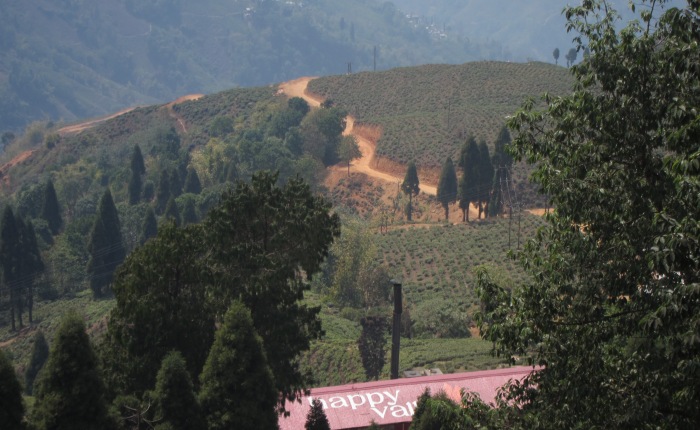At the Life & Leaf Fair Trade shop in Darjeeling they were selling some organic tea produced in Darjeeling by “Mineral Springs.” Unlike the last tea garden I visited, the Makaibari Tea Estate, Mineral Springs is not listed by the Tea Board of India as one of the 87 Darjeeling Tea Gardens, so I was curious to find out more about it. Continue reading “Small is Big: Sanjukta Vikas”
Tag: Tea Factory
Tea with Rajah Banerjee
After touring the factory at the Makaibari Tea Estate with a group from Young Mountain Tea, I joined them in a tea tasting session with Rajah Banerjee, the owner of the estate. Under Mr. Banerjee’s leadership, Makaibari has become the most famous of Darjeeling’s 87 tea gardens. A fourth generation tea planter, he is known for pioneering natural growing methods and social welfare programs. Continue reading “Tea with Rajah Banerjee”
Makaibari: Organic, Biodynamic Tea
After the Darjeeling Himalayan Railway left me at Kurseong, I made my way to the Makaibari Tea Estate, where I spent two days with a family of tea workers. My hostess, Pushpa, is one of several women participating in Makaibari’s home stay program, initiated by its charismatic and progressive owner, Rajah Banerjee. The program helps generate additional income for the tea communities while providing to the tourist a unique perspective on tea garden life. Continue reading “Makaibari: Organic, Biodynamic Tea”
Darjeeling Himalayan Railway

There are several tea estates near Kurseong, which is about 25 km south of Darjeeling. A Jeep covers the distance in just over an hour, but I rode the train instead, which takes more than twice as long but offers the unusual experience of traveling by a UNESCO World Heritage railway. Continue reading “Darjeeling Himalayan Railway”
Darjeeling Tea Garden Communities
Darjeeling tea gardens, of course, have tea bushes and tea factories. But they also contain residential villages and the social infrastructure to support their people. There are modest homes for the tea workers and bungalows for the garden managers. There are schools, temples, churches, daycare centers, clinics, tailors and small shops. Much of this infrastructure is subsidized by the operator of the garden, but the tea workers don’t own the land under the bushes they pluck. What are the implications of this sort of arrangement?
Happy Valley Tea Estate
One of the oldest tea gardens in Darjeeling, Happy Valley Tea Estate was established in 1854. Some of its tea bushes are well over 100 years old. Several years ago the garden began the transition from conventional to organic growing, and now it has both organic and biodynamic certifications. Continue reading “Happy Valley Tea Estate”
Bir and Tea
For me, one of the benefits of being a tea tourist is that tea is grown in places I enjoy visiting. Happily, some of the best tea is grown in mountainous highlands. The village of Bir, in the Kangra region of Himachal Pradesh, is at an altitude of 1500 meters and is surrounded by tea gardens. It is also the home of a major Tibetan settlement, and nearby Billing is a world-famous takeoff point for paragliding. Continue reading “Bir and Tea”
Palampur Cooperative Tea Factory

In the mid 19th century, China tea bushes were brought to the Kangra region of Himachal Pradesh by the Scottish botanist William Jameson. Today Kangra produces about 800,000 kg of tea annually, a small amount of India’s total annual production of over 1.2 billion kg, according the Indian Tea Association. Continue reading “Palampur Cooperative Tea Factory”






